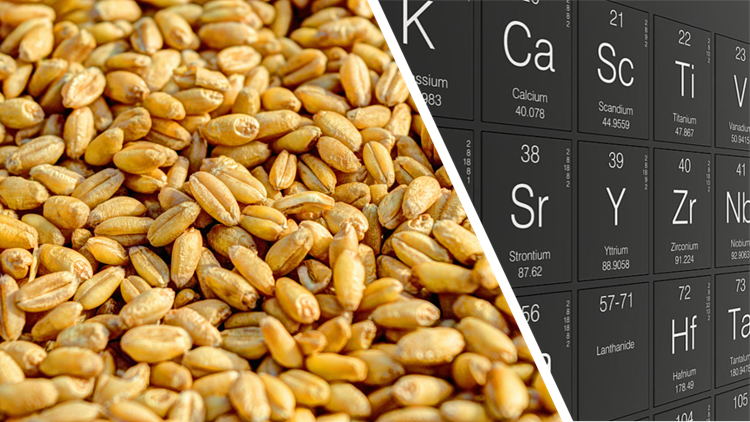In the Mediterranean area, wheat is a staple food and is grown on about 27% of the arable land. Wheat currently provides 18% of the daily intake of calories and 20% of proteins for humans. However, to ensure a healthy and productive wheat crop, it is essential to develop a nutritional plan that addresses the specific nutrient needs of the crop.
Nutritional requirements of wheat
Wheat’s nutritional requirements depend on several factors, including genetic variability, the crop’s growth stage, the soil it grows in and the climate of the area where it is grown.
Nutrient balance as a need
A good yield is the result of an accurate balance between macronutrients and micronutrients. The deficiency of a single nutrient limits crop yield and the soil availability of each nutrient must meet the needs of the crop.
The Law of Minimum (Justus von Liebig, 1873) states that growth is not limited by total resources, but by the scarcest resource which becomes the limiting factor. A nutrient management plan should focus on achieving a balance of essential nutrients for optimal growth.
But what does our food eat?
Macronutrients are the primary nutrients that plants need in large quantities. The three main macronutrients required by wheat are:
Nitrogen is part of the chlorophyll molecule and is important for plant growth and development. Final grain size and yield of wheat are most influenced by N management.
Phosphate plays an important role in providing energy for plant processes. Redistribution of stored carbohydrate requires energy derived from ATP, a phosphate-rich molecule, making phosphate nutrition important for achieving good wheat grain size.
An inadequate supply of potassium can lead to premature wilting and lodging. K-deficient straw is more brittle, increasing the risk of lodging, which dramatically reduces both yield and quality. As a secondary macronutrient: Sulphur is an important component of all proteins and is always required along with nitrogen for protein synthesis.
Essential micronutrients needed in wheat include:
- Iron is essential for the development of chlorophyll, which is needed for photosynthesis.
- Manganese and Zinc, with their roles in the plant’s nitrogen metabolism, have a positive effect on wheat grain weight.
- Copper and Boron have different roles to play in the production of a healthy flower and in pollination.
Fertiliser application program
It is widely recommended that an annual plan should be drawn up, calculated within a fertiliser recommendation system, usually taking into account the uptake of the crop, the preceding crop, the level of soil fertility (by physicochemical analysis) and other contributions, if any, such as the addition of organic matter or other soil amendments that should be taken into account as a nutrient source.
The timing of nutrient application should be synchronised with the peak requirements of the developing crop during the construction phase of the development.
Nutrients applied out of phase with crop uptake are at risk of loss through run-off, leaching and volatilisation.
The most used strategy is a background application, which provides up to 30% of the N and most of the P and K, and one or two top dressing N application, which usually provides the remainder N.
Establishing a nutritional plan for wheat is essential to ensure that plants receive the nutrients they need for a healthy growth and development. Remember to consider both macronutrients and micronutrients, follow best fertilisation practices and monitor nutrient levels throughout the growing season. By developing a nutritional plan for your wheat crops, you can improve the yield and quality of your crop while reducing the environmental impact of overfertilisation.
Want to know more?
Contact catherine.malingreau@wagralim.be or Follow the project’s LinkedIn page

